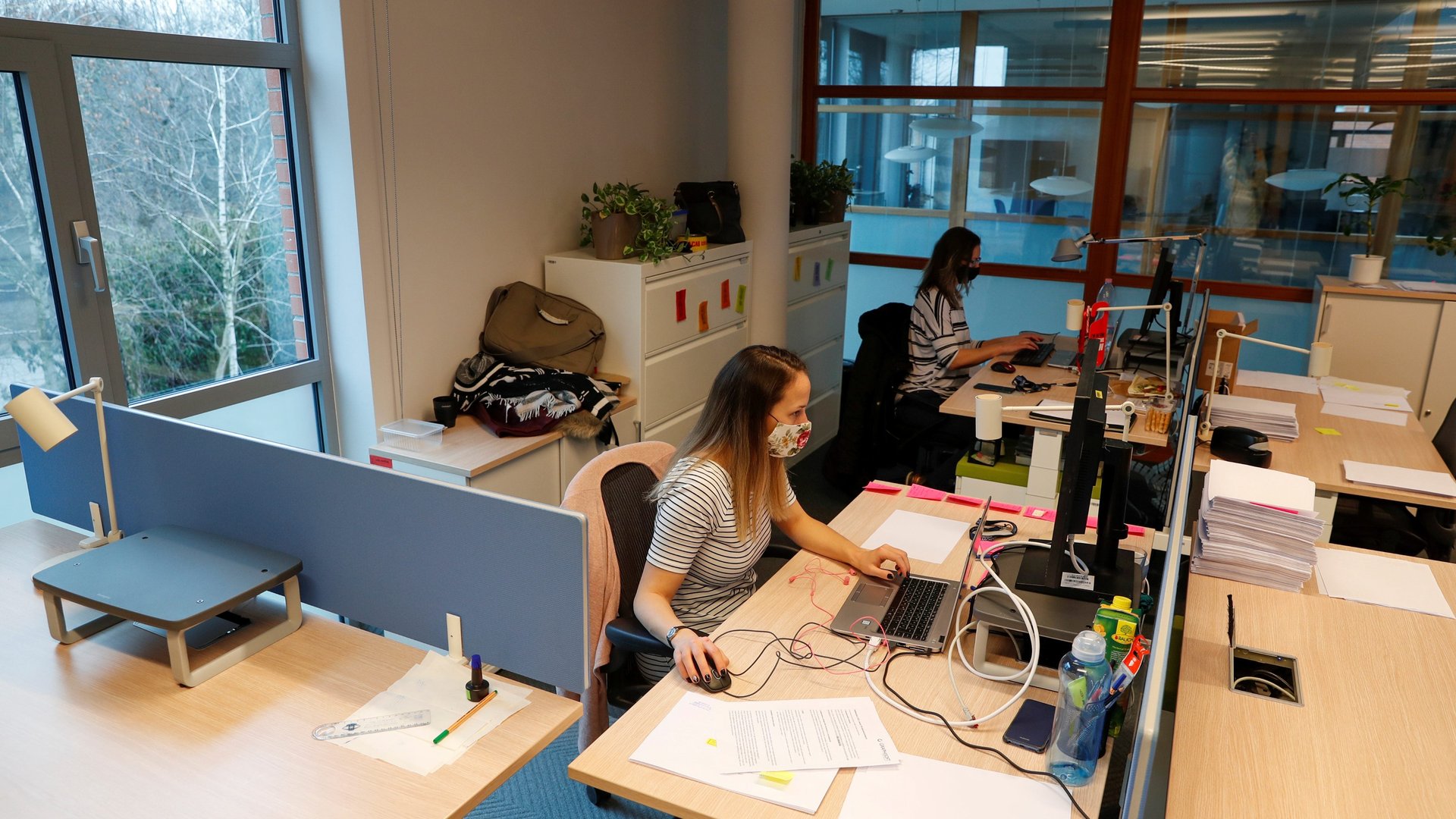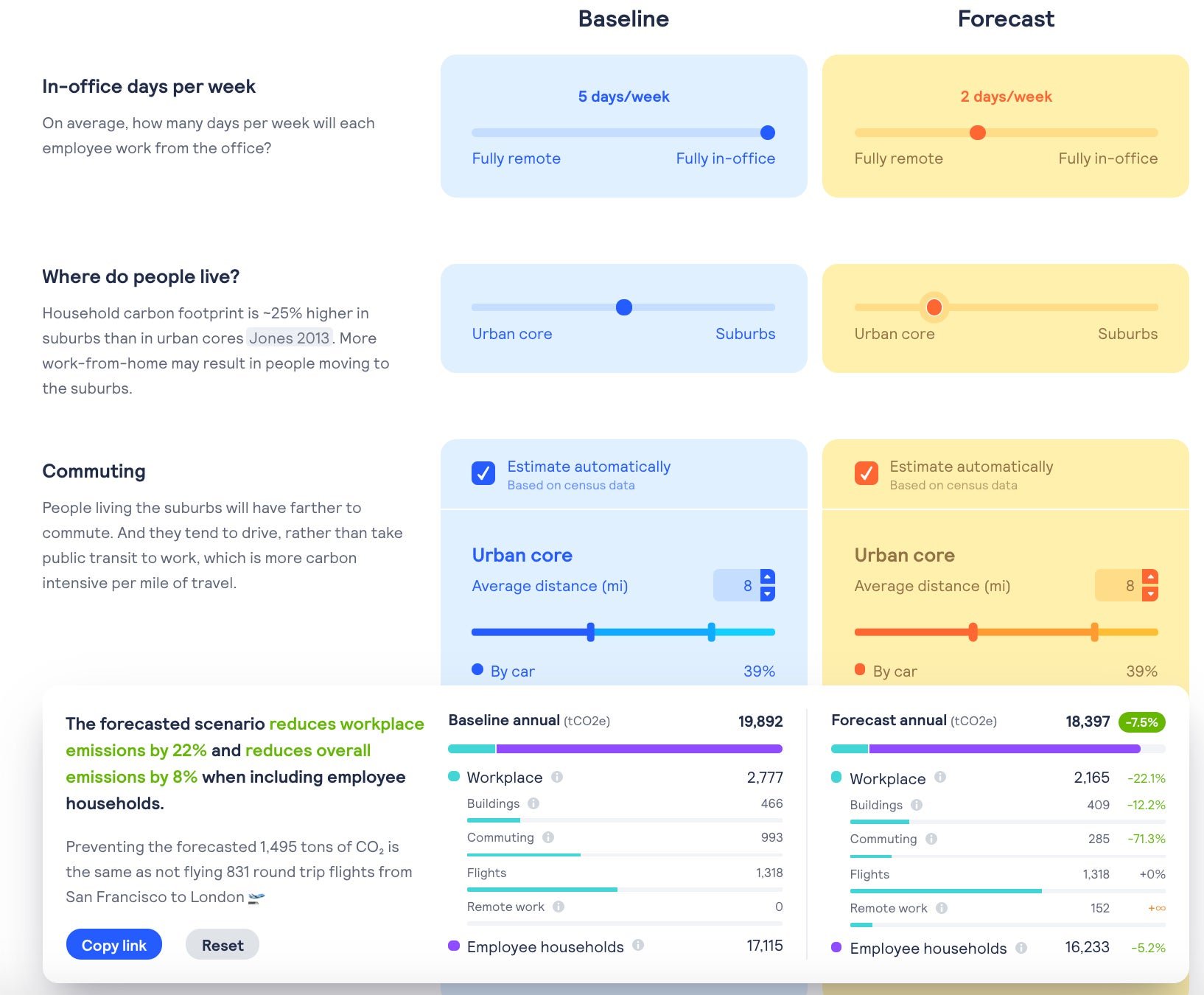How offices can reopen with a lower carbon footprint
Working from home during the pandemic might make people stir-crazy, but it could be good for the planet. A significant share of companies’ carbon footprint is due to employee commutes and office energy use. Elected officials in the San Francisco Bay Area, for example, are working on a proposal to mandate a few days per week of remote work for employees in large downtown offices.


Working from home during the pandemic might make people stir-crazy, but it could be good for the planet. A significant share of companies’ carbon footprint is due to employee commutes and office energy use. Elected officials in the San Francisco Bay Area, for example, are working on a proposal to mandate a few days per week of remote work for employees in large downtown offices.
As companies think about re-opening offices after the pandemic, their approach to remote work and business travel could become an important part of their overall climate strategy. A new calculator from the software firm Watershed—which has developed carbon-cutting strategies for Square, Sweetgreen, and a few other major brands—aims to help companies in five major global cities identify which post-pandemic work policies could have the biggest carbon impact.

Of course, remote work comes with its own carbon costs, especially if many employees live in the suburbs, where per-capita home electricity and heating emissions are higher than in cities. Remote work might reduce a company’s office-related emissions, but it doesn’t eliminate them—it just shifts them to employees.
For each of the five cities (New York, Houston, San Francisco, London, and Toronto), the calculator incorporates data on local electric grid emissions and average household energy consumption. Users input data about their company’s size, office space, travel policies, and other variables, and the calculator produces an estimate of its pre-pandemic office-related emissions (emissions related to the company’s products, which presumably are unaffected by whether workers are remote or not, are not considered). Then you can tweak the variables—require one less day of in-person work per week, for example, and see how the footprint changes. Watershed also points to some possible employee benefits that could help move the needle in the right direction—offering a larger reimbursement for public transit than for parking fees, for example, or reimbursing for household clean power subscriptions.
The single biggest potential impact: Reducing air travel. “For an average 100-person startup,” Watershed reports, ”reducing round-trip flights per employee from three to two a year could cut as much as 20% from the company’s workplace emissions.”